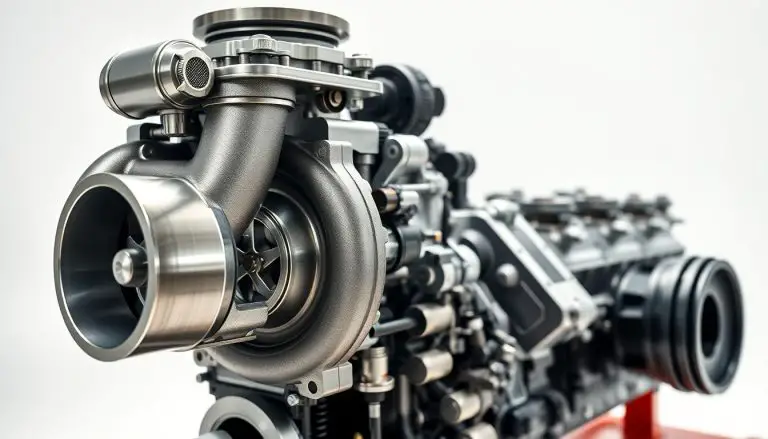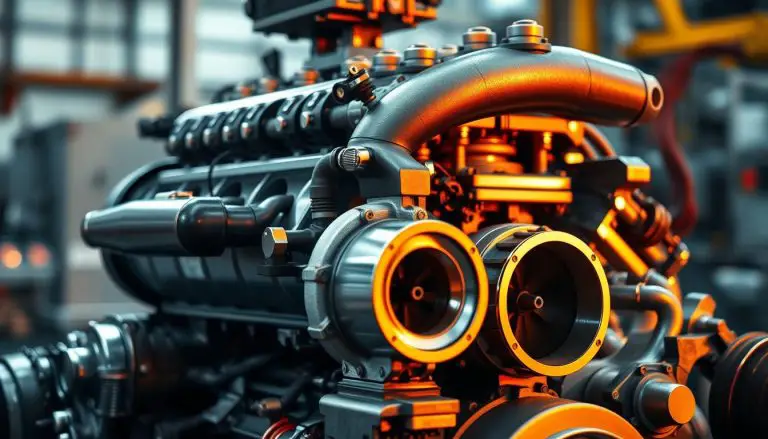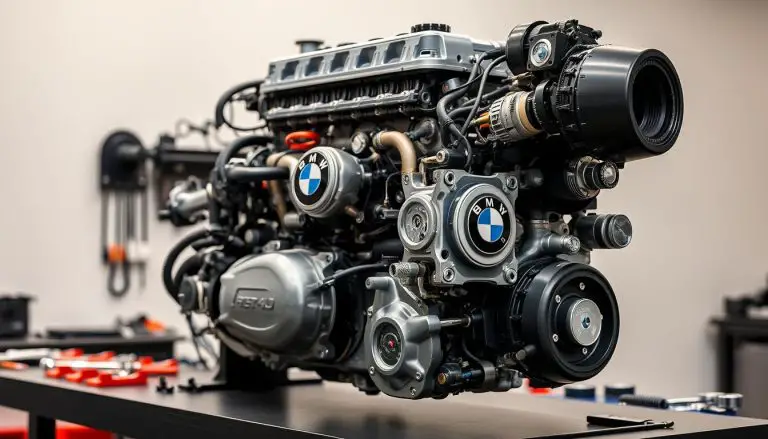The reliability of a vehicle’s engine is paramount in assessing its performance and longevity. For Hyundai and KIA owners with the 3.5L V6 engine, this is a critical concern. A reliable engine is essential for a smooth driving experience, and any issues can lead to costly repairs and decreased vehicle value.
Engine reliability is influenced by various factors, including design, manufacturing, and maintenance. In this article, we will examine the reliability of the 3.5L V6 engine, exploring its strengths and weaknesses to provide a comprehensive understanding of its performance.
Key Takeaways
- The importance of engine reliability in vehicle ownership.
- Factors influencing the reliability of the 3.5L V6 engine.
- Common issues affecting the engine’s performance.
- Maintenance tips to ensure optimal engine reliability.
- Expert analysis of the engine’s overall reliability.
Overview of the Hyundai/KIA 3.5L V6 Engine
The Hyundai/KIA 3.5L V6 engine, a paragon of performance, is employed across a spectrum of models. Its formidable design, marrying power with efficiency, solidifies its position as a cornerstone within both brands’ portfolios.
Technical Specifications and Design
The 3.5L V6 engine’s advanced design is underscored by several key features, each contributing to its enhanced performance and longevity. Notably, it boasts a displacement of 3.5 liters, a V6 configuration, and the utilization of advanced materials to minimize weight while augmenting strength.
Engine Architecture and Materials
The engine’s architecture is meticulously crafted for superior performance, incorporating aluminum alloy for the engine block and cylinder heads. This combination strikes a harmonious balance between robustness and weight reduction.
Output Specifications
The output specifications of the 3.5L V6 engine exhibit variability based on its application. Typically, it encompasses horsepower ratings ranging from 290 to 300 HP and torque ratings approximately 262 LB-ft.
| Specification | Detail |
|---|---|
| Displacement | 3.5 Liters |
| Configuration | V6 |
| Horsepower | 290-300 HP |
| Torque | 262 LB-ft |
Evolution Through Model Years
Throughout its evolution, the 3.5L V6 engine has received numerous updates aimed at enhancing performance and efficiency. These enhancements have encompassed refinements to the engine’s management system and minor mechanical component adjustments.
Vehicle Applications
The Hyundai/KIA 3.5L V6 engine is deployed in a diverse array of vehicles, including the Hyundai Santa Fe, Hyundai Sonata, KIA Sorento, and KIA Telluride. Its adaptability and performance capabilities render it suitable for a broad spectrum of applications, spanning from sedans to SUVs.

Performance Characteristics of the 3.5L V6
The Hyundai/KIA 3.5L V6 engine is celebrated for its formidable performance attributes, garnering acclaim among vehicle proprietors who prioritize both vigor and frugality.
Power Delivery and Acceleration
The 3.5L V6 engine showcases impressive power, its V6 configuration ensuring effortless acceleration. It generates considerable horsepower, rendering it apt for a myriad of driving scenarios.
- Quick acceleration from 0 to 60 mph
- Smooth power delivery across different RPM ranges
- Strong performance in both city and highway driving
Fuel Economy Ratings
Despite its potent performance, the 3.5L V6 engine boasts competitive fuel economy ratings. This equilibrium stems from cutting-edge engine technology and design enhancements.
Towing Capability and Load Handling
The engine’s towing capacity is noteworthy, rendering it suitable for proprietors necessitating the towing of trailers or boats. Its robust construction and power output empower it to manage considerable loads.
Driving Experience
The driving experience is elevated by the engine’s performance attributes, including its throttle response and power band.
Noise, Vibration, and Harshness
The 3.5L V6 engine is crafted to minimize NVH, ensuring a tranquil driving experience. Sophisticated engineering methodologies are employed to curtail noise and vibration.
Throttle Response and Power Band
The engine’s throttle response is responsive, and its power band is optimally suited for a variety of driving modalities, from leisurely cruising to more exuberant driving.

Hyundai/KIA 3.5L V6 Engine Reliability Assessment
The 3.5L V6 engine, a cornerstone in Hyundai and KIA’s lineup, necessitates a thorough examination of its reliability. This evaluation will scrutinize the engine’s prevalent problems, anticipated longevity, recall history, and its overall merits and drawbacks.
Known Issues and Failure Points
Reports have surfaced regarding the 3.5L V6 engine, highlighting concerns over oil consumption, timing chain malfunctions, and the reliability of the cooling system.
Oil Consumption Concerns
Excessive oil consumption has been a recurring problem in certain model years, potentially escalating maintenance expenditures. Regular oil checks are imperative to address this issue effectively.
Timing Chain Problems
Timing chain malfunctions, encompassing stretch and failure, have been documented. Prompt replacement upon detection of symptoms is crucial to avert further engine deterioration.
Cooling System Reliability
Cooling system failures can precipitate overheating, a condition that may severely impair engine functionality. It is essential to maintain the cooling system in optimal condition.
Expected Lifespan and Durability
The 3.5L V6 engine is generally viewed as durable, with many units surpassing 200,000 miles without significant complications. Adherence to proper maintenance is paramount to achieving this longevity.
Recall History and Factory Defects
An examination of recall history is crucial to uncover potential factory defects. Hyundai and KIA have issued recalls for specific model years, addressing concerns such as engine fire risks.
Pros and Cons of the 3.5L V6
- Advantages: Smooth power delivery, decent fuel economy for its class, and robust performance.
- Disadvantages: Some model years have known issues, and maintenance can be costly if not performed regularly.
Advantages Over Competitors
The 3.5L V6 engine presents competitive performance and efficiency compared to other V6 engines in its category.
Disadvantages and Limitations
Despite its advantages, the engine’s reliability is a concern in certain model years, and some owners have reported elevated maintenance costs over time.
Maintenance Requirements and Ownership Costs
The long-term ownership costs of vehicles powered by the Hyundai/KIA 3.5L V6 engine are influenced by several factors, including maintenance requirements. Understanding these costs is crucial for making an informed purchase decision.
Recommended Service Schedule
The Hyundai/KIA 3.5L V6 engine, like any other engine, requires regular maintenance to ensure optimal performance and longevity. The recommended service schedule typically includes oil changes every 5,000 to 7,500 miles, spark plug replacement at around 30,000 miles, and timing belt replacement between 60,000 to 90,000 miles.
Common Replacement Parts and Pricing
Some of the common parts that may need replacement include timing belts, water pumps, and spark plugs. The cost of these parts can vary, but on average, a timing belt replacement can cost between $300 to $500, while spark plug replacement can range from $150 to $300.
DIY Serviceability Assessment
The DIY serviceability of the Hyundai/KIA 3.5L V6 engine is relatively good, with many maintenance tasks accessible to experienced DIYers. Certain repairs, such as timing belt replacement, may require specialized tools and mechanical knowledge.
Long-Term Cost of Ownership
When evaluating the long-term cost of ownership, several factors come into play, including repair frequency and parts availability.
Repair Frequency Comparison
Compared to other V6 engines in its class, the Hyundai/KIA 3.5L V6 engine has a relatively low repair frequency, thanks to its robust design and reliable components.
Parts Availability and Pricing
Parts for the Hyundai/KIA 3.5L V6 engine are widely available, both from Hyundai/KIA dealerships and aftermarket suppliers. Pricing can vary, but generally, OEM parts are more expensive than their aftermarket counterparts.
| Maintenance Item | Cost Range | Frequency |
|---|---|---|
| Oil Change | $30-$75 | Every 5,000-7,500 miles |
| Spark Plug Replacement | $150-$300 | Every 30,000 miles |
| Timing Belt Replacement | $300-$500 | Between 60,000-90,000 miles |
Real-World Owner Experiences
Experiences from real-world owners of the Hyundai/KIA 3.5L V6 engine provide a nuanced understanding of its capabilities and limitations. Through various satisfaction ratings and durability reports, owners have articulated their perspectives.
Consumer Satisfaction Ratings
Consumer satisfaction with the Hyundai/KIA 3.5L V6 engine is predominantly positive, with many owners extolling its performance and reliability. Surveys indicate that owners value the engine’s power and its smooth operation.
Durability in High-Mileage Examples
The durability of the Hyundai/KIA 3.5L V6 engine is exemplified in high-mileage scenarios, where owners report minimal issues despite extensive use. Adherence to proper maintenance is crucial for achieving such longevity.
Comparison to Similar V6 Engines
The Hyundai/KIA 3.5L V6 engine holds its own when compared to similar V6 engines from other manufacturers. An examination of its performance relative to competitors is warranted.
Toyota 3.5L V6
The Toyota 3.5L V6 is renowned for its reliability, yet the Hyundai/KIA engine offers comparable performance at potentially lower ownership costs.
Honda 3.5L V6
Honda’s 3.5L V6 is celebrated for its fuel efficiency, but the Hyundai/KIA engine provides better power output in various applications.
Nissan 3.5L V6
Nissan’s 3.5L V6 has its merits, but the Hyundai/KIA engine is often preferred for its balance of power and efficiency.
Ideal Buyers and Use Cases
The Hyundai/KIA 3.5L V6 engine is ideal for buyers seeking a reliable and powerful engine for daily driving or towing. It is most suited for those who prioritize a balance between performance and fuel economy.
Conclusion: Is the Hyundai/KIA 3.5L V6 Worth It?
The Hyundai/KIA 3.5L V6 engine stands as a testament to the pinnacle of automotive engineering, embodying both power and reliability within the KIA Sorento’s framework. Its capacity to deliver power instantaneously, coupled with its linear performance, renders it a compelling choice for those desiring a refined driving experience.
In the KIA Sorento S V6 FWD review, the engine’s prowess is further accentuated by its 8-speed automatic transmission, facilitating seamless gear transitions. Yet, its fuel economy, notably in urban settings, may pose a dilemma for prospective buyers.
Assessing its merits, the Hyundai/KIA 3.5L V6 engine emerges as a paragon of reliability, performance, and value. Its durability and minimal maintenance needs underscore its worth for long-term vehicle ownership, affirming its reliability worth it status.
The decision to invest in the Hyundai/KIA 3.5L V6 engine hinges on personal preferences and requirements. For those valuing a harmonious blend of power and dependability, this engine represents a commendable option, solidifying its engine worth it reputation among drivers.
FAQ
What is the average lifespan of the Hyundai/KIA 3.5L V6 engine?
The Hyundai/KIA 3.5L V6 engine’s longevity, contingent upon consistent maintenance, is estimated to range between 200,000 to 250,000 miles.
What are the most common issues with the Hyundai/KIA 3.5L V6 engine?
Predominant challenges faced by the Hyundai/KIA 3.5L V6 engine include excessive oil consumption, timing chain malfunctions, and uncertainties regarding cooling system efficacy.
How often should I service my Hyundai/KIA 3.5L V6 engine?
Adherence to the manufacturer’s guidelines is paramount for the Hyundai/KIA 3.5L V6 engine. This entails oil changes at intervals of 5,000 to 7,500 miles, complemented by additional services as delineated in the owner’s manual.
Can I DIY maintenance and repairs on the Hyundai/KIA 3.5L V6 engine?
Affirmative, numerous maintenance and repair tasks for the Hyundai/KIA 3.5L V6 engine can be undertaken by the owner. It is, though, crucial to evaluate one’s proficiency and adhere to stringent safety protocols.
How does the Hyundai/KIA 3.5L V6 engine compare to similar V6 engines from other manufacturers?
The Hyundai/KIA 3.5L V6 engine exhibits parity with its counterparts from Toyota, Honda, and Nissan, showcasing comparable performance, dependability, and value.
What are the ideal use cases for the Hyundai/KIA 3.5L V6 engine?
The Hyundai/KIA 3.5L V6 engine is optimally suited for a spectrum of applications, encompassing family sedans, SUVs, and light trucks. Its attributes of power, efficiency, and reliability are notably advantageous in these contexts.
Are there any recalls or factory defects associated with the Hyundai/KIA 3.5L V6 engine?
Affirmative, the Hyundai/KIA 3.5L V6 engine has been subject to recalls and factory defects, including problems with engine block casting, piston rings, and other critical components.


